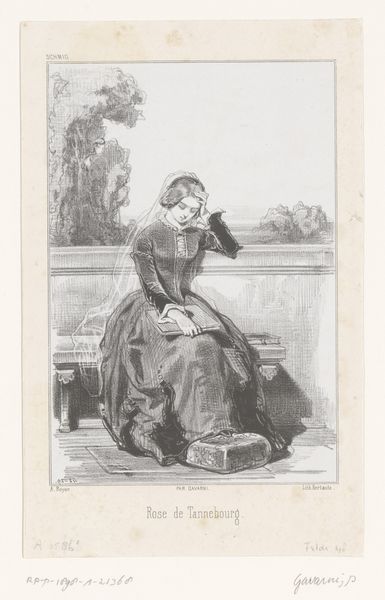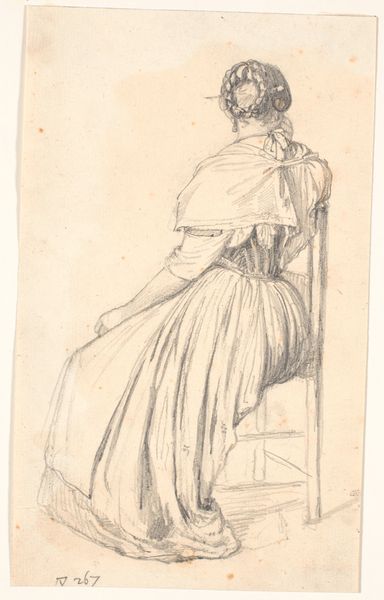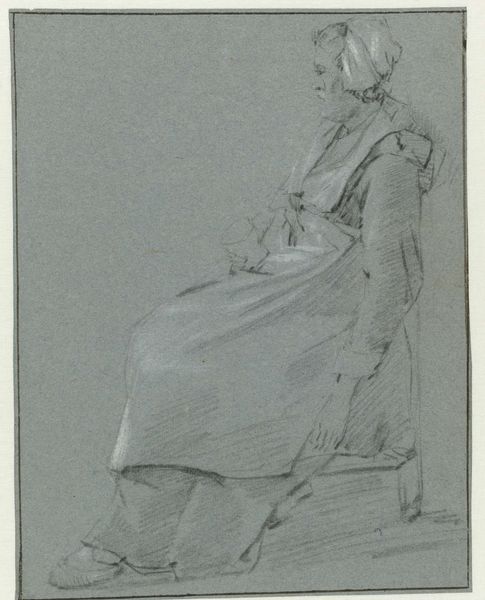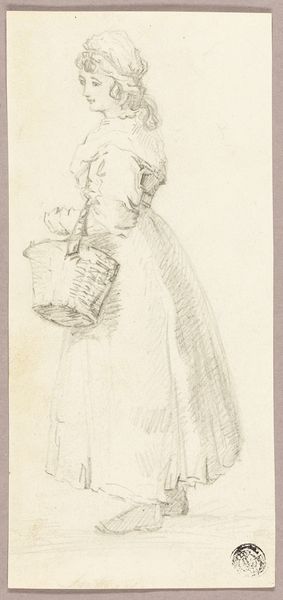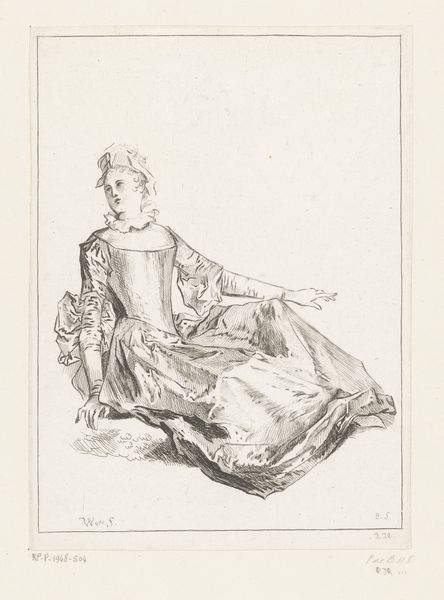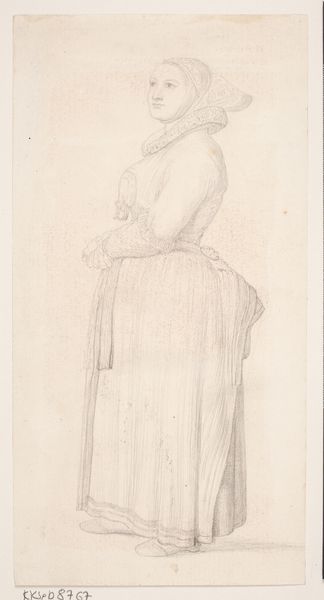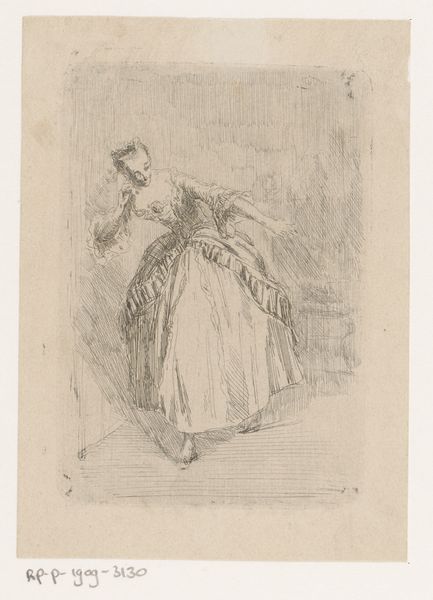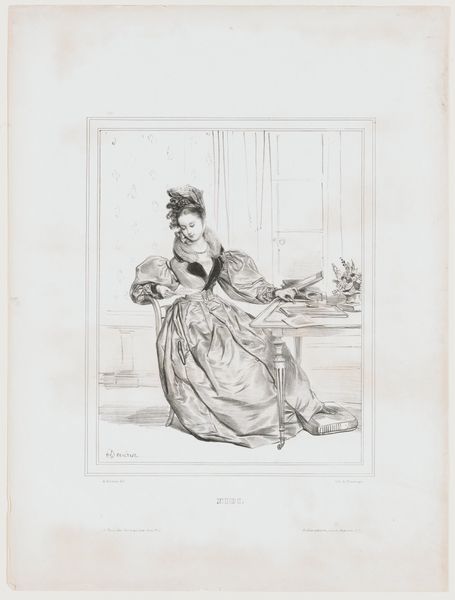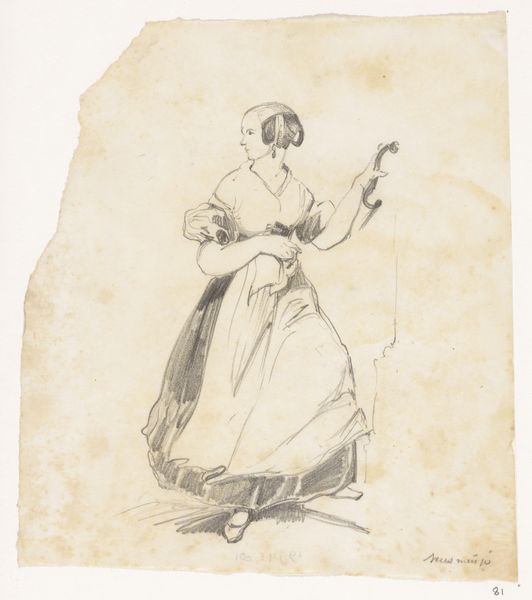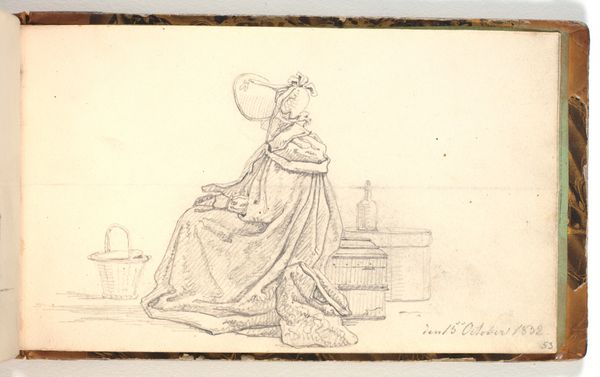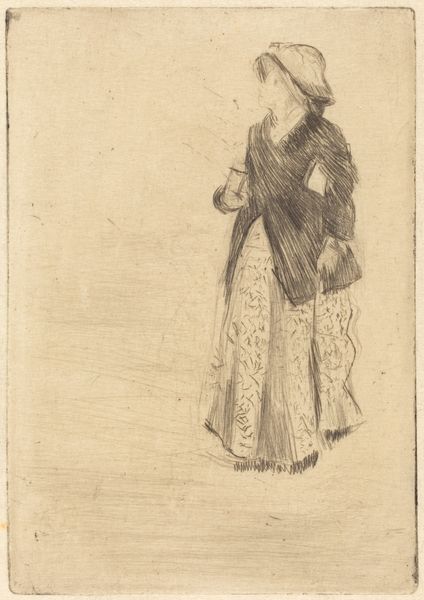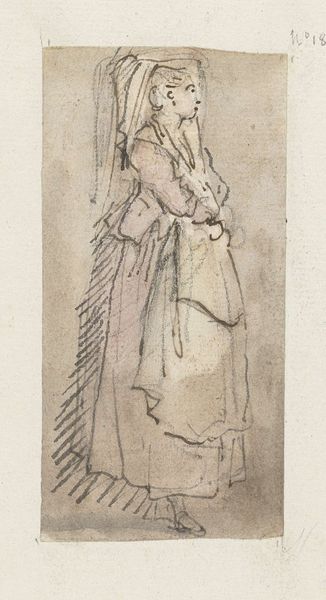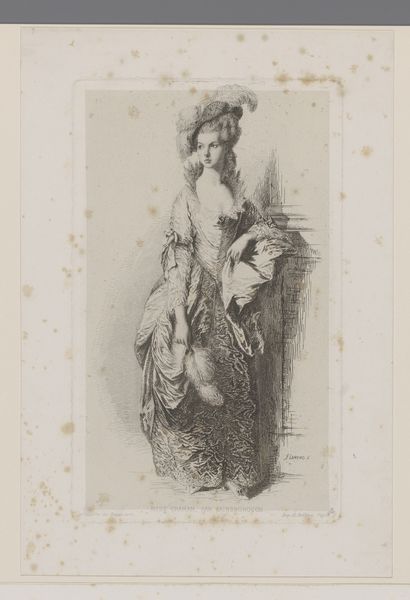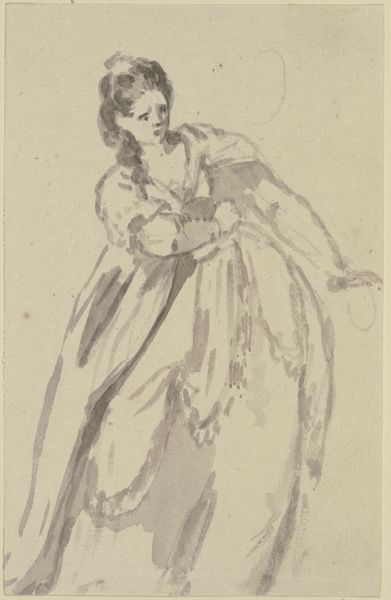
drawing
#
portrait
#
drawing
#
figuration
#
romanticism
#
academic-art
Dimensions: 214 mm (height) x 161 mm (width) (bladmaal)
Curator: Well, hello there! My goodness, doesn't she just seem lost in thought? I wonder what's occupying her mind... Editor: That’s Martinus Rørbye’s “En Archonts' Kone," from 1835. It's a drawing, currently residing here at the SMK. Immediately, I see a certain ethnographic romanticism. How would you describe the first impression of the image? Curator: Melancholy, I think. Perhaps longing. Her pose is so languid, almost drooping. It’s delicately rendered, but there is something sad about it. All the details, like the slippers cast aside, suggest a world of unspoken stories, right? Editor: Indeed. Consider Rørbye's broader interest in depicting domestic life within different cultural contexts. There's an element of spectacle, sure. The museum as a colonial display space certainly played a role. Yet, the artist lived among the depicted. Do you sense that reflected? Curator: I feel that humanity, absolutely! It transcends the potential for "mere" documentation. I suppose this image could be seen as exoticised, and it IS rendered in that precise Romantic style… Still, I get a sense of someone capturing a lived reality, imbued with emotion. Not an idealized projection. What about the compositional choices, does that reinforce or detract? Editor: It complicates. The woman dominates the scene, but her gaze is directed elsewhere. The detail of her garments contrasts sharply with the blank background. It directs our attention, but simultaneously feels unfinished, leaving the sitter caught between representation and reality, subject and object of the gaze. Curator: Hmm. "Caught between representation and reality" – that's a brilliant turn of phrase! Makes you wonder about her existence *beyond* this single moment captured by Rørbye, doesn’t it? As if we, the viewers, are intruding ever-so-slightly on a quiet moment. Editor: It's hard not to when we're trained to appreciate such works from a post-colonial perspective, isn't it? To examine not just *what* is presented, but *how*, and the socio-political currents that shaped its reception in different periods. The artist lived in ways and places closed to the European mainstream. A more engaged participant/observer maybe than we give him credit for at times? Curator: Perhaps! That's such a vital layer in approaching art, especially when these pieces start dialogues about history and personhood, so thoughtfully interwoven in Rørbye’s piece, yes. Editor: Well, thanks for musing over it with me. Curator: Likewise!
Comments
No comments
Be the first to comment and join the conversation on the ultimate creative platform.
